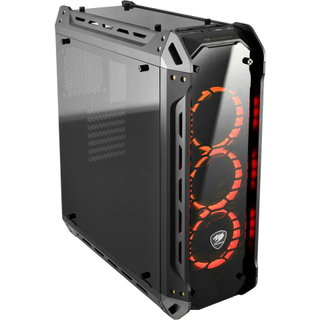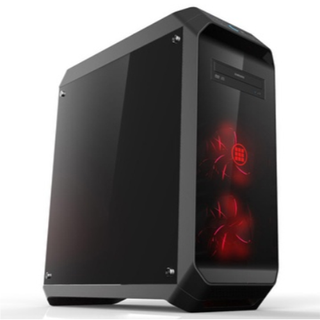FSP CMT520 Mid-Tower ATX RGB Case: Tempered Value?
Why you can trust Tom's Hardware
Testing Results & Conclusion
For the purposes of comparison, we are using the Vivo V10G, the Cougar Panzer G, the Micronics Master M400, and FSP's own CMT510. The cases used for comparison are of similar sizes and feature sets, and all have one or more tempered-glass side panels.
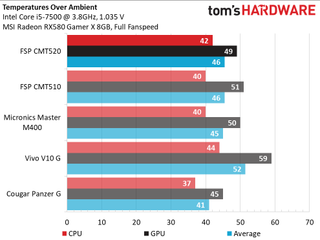
The temperatures on our budget quad-core Core i5-7500 processor, running at 3.8GHz, peaked at 42° C over the ambient temperature of 25° C under full load. These results are on par with Cougar's Panzer G mid-tower ATX chassis. GPU temperatures were equally impressive. Our test GPU leveled off at 49° over the ambient temperature. These results are better than the FSP CMT510 and equally matched to those of the be quiet! Dark Base 700. In fact, the temperatures we see here today rival those of the NZXT H700i, a chassis almost twice the price of the CMT520.
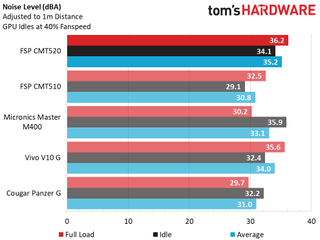
Normally, tempered glass panels do a good job of reflecting noise back into the case. Unfortunately for the CMT520, the vents in the front of the case, combined with the gap between the front glass panel and the plastic front face, allows a considerable amount of noise to escape the chassis. At 36.2 dBA under load, the CMT520 is one of the loudest cases equipped with tempered glass panels that we have tested. It is rare that a chassis with a tempered glass front panel is louder than open-face mesh chassis such as the Silverstone Redline RL06 and the Cooler Master MasterCase H500P Mesh. If keeping system noise low is at the top of your list of priorities, you'd be better served by virtually any other case in this comparison.
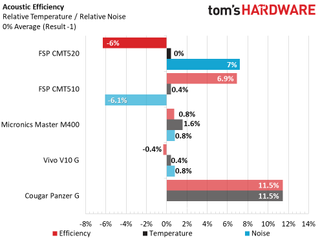
Cooling is one way to measure performance. Noise levels are another. Comparing cooling to noise gives us an overall performance rating labeled “acoustic efficiency” and better known as cooling-to-noise ratio. Regrettably, the overall cooling benefit of this chassis was canceled out by the sizable noise deficit.
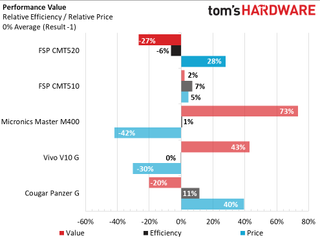
The CMT520's current street price is just too high for what this chassis has to offer. This chassis' exceptional thermal performance skews out Perormance Value charts to make it seem as though it is a better value than it truly is. Poor acoustic performance, lackluster build quality, and missing features, make it a poor value overall.
MORE: Best Cases
MORE: All Case Content
Current page: Testing Results & Conclusion
Prev Page Hardware Installation & Test ConfigurationStay On the Cutting Edge: Get the Tom's Hardware Newsletter
Get Tom's Hardware's best news and in-depth reviews, straight to your inbox.

Microsoft prepares DirectX to support neural rendering for AI-powered graphics — a key feature of the update will be Cooperative Vector support

Intel i9-14900KF overclocker clinches CPU frequency world record at 9.12 GHz — Wytiwx joins Elmor as the only person to push a CPU past 9 GHz

Maker builds a Raspberry Pi 5 powered stereoscopic 3D video camera

